Manholes are often placed in unexpected locations, which means manhole inspections and repairs, particularly manhole casting repair, can take the Collection System Services (CSS) crew in some interesting and challenging settings.
“About 60% of our manholes are off-road,” says Ray Schneider, collections systems services supervisor, “we go to swamps, farmer’s fields, people’s backyards – there’s even one on one of the runways at Truax Field.” Sometimes, if a manhole has never been inspected, it could be buried three or more feet underground – one of the most challenging was a manhole that was buried 45 feet underground.
Overseeing 1,600+ District manholes
Manhole inspections are a critical piece in maintaining the health of all the pipes in the collection system, but also for keeping excess clear water, or inflow and infiltration (I/I), out of the system and treatment plant. This helps keep the system from getting overloaded during storm events and reduces costs from unnecessarily treating clean water. “I/I is the main thing we are looking for in the inspections,” says Ray.
The CSS crew inspects between 350 and 400 manholes each year, and in the past, made repairs on 20-30 of those. In 2022, they repaired over 100. Ray credits this increase to the Reliability Centered Maintenance (RCM) efforts that make for better planning and scheduling, as well as having Griffin Bohm, CSS intern, on staff all summer and fall.
While the entire manhole is inspected, including the lining, the most common repair is to the manhole casting, which is the frame and cover at the opening of the manhole. The concrete rings that raise the manhole to grade level are often cracked and deteriorating, so these are replaced with new plastic rings.
The switch from concrete to plastic rings also makes for faster work. “Concrete rings are 60-75 lbs. per ring,” says Ray, “so we couldn’t carry as many.” The plastic rings are light, can be placed at an angle if the conditions are sloped, and will be more effective at keeping out I/I.
Amy Steger, communications and marketing specialist, went out on (and off) the road with Ben Vehlow, Derek Steinhorst and Ray to capture the process of the manhole repair work in photos:
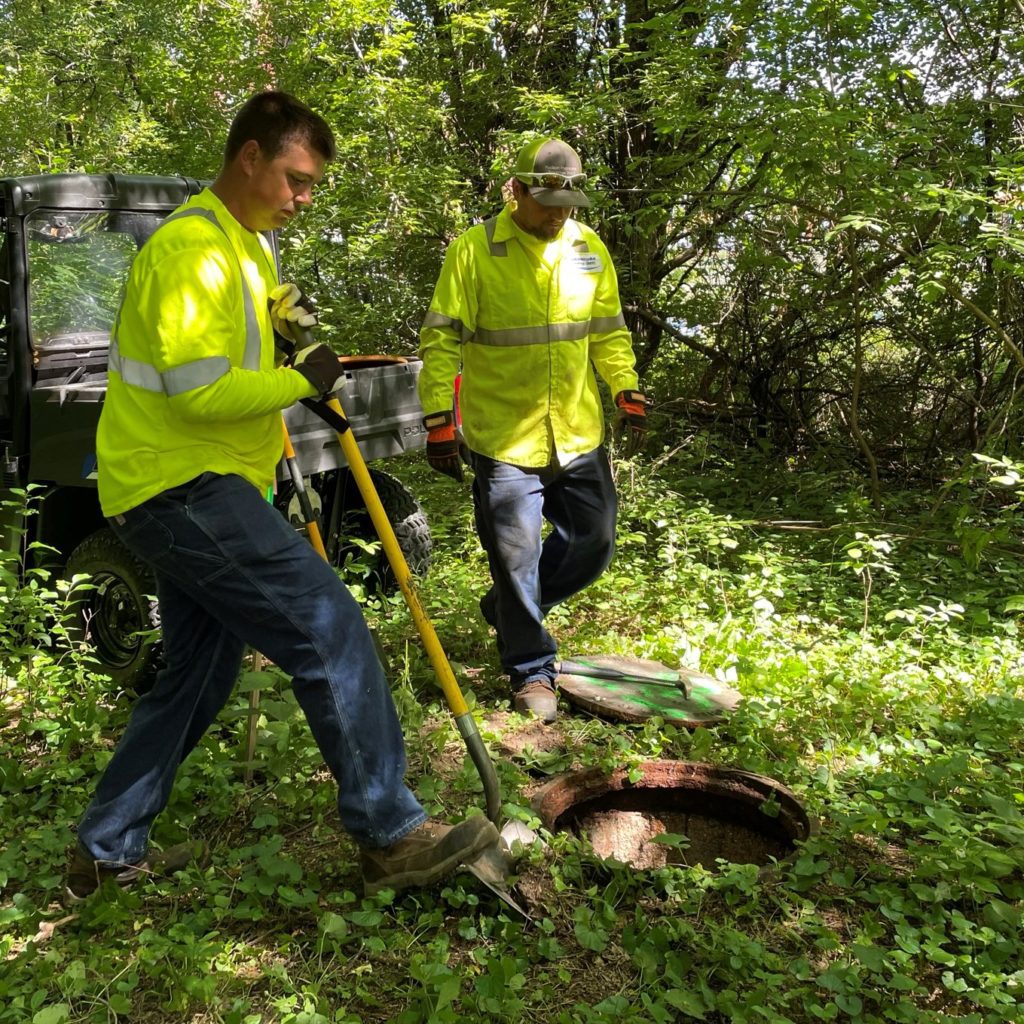
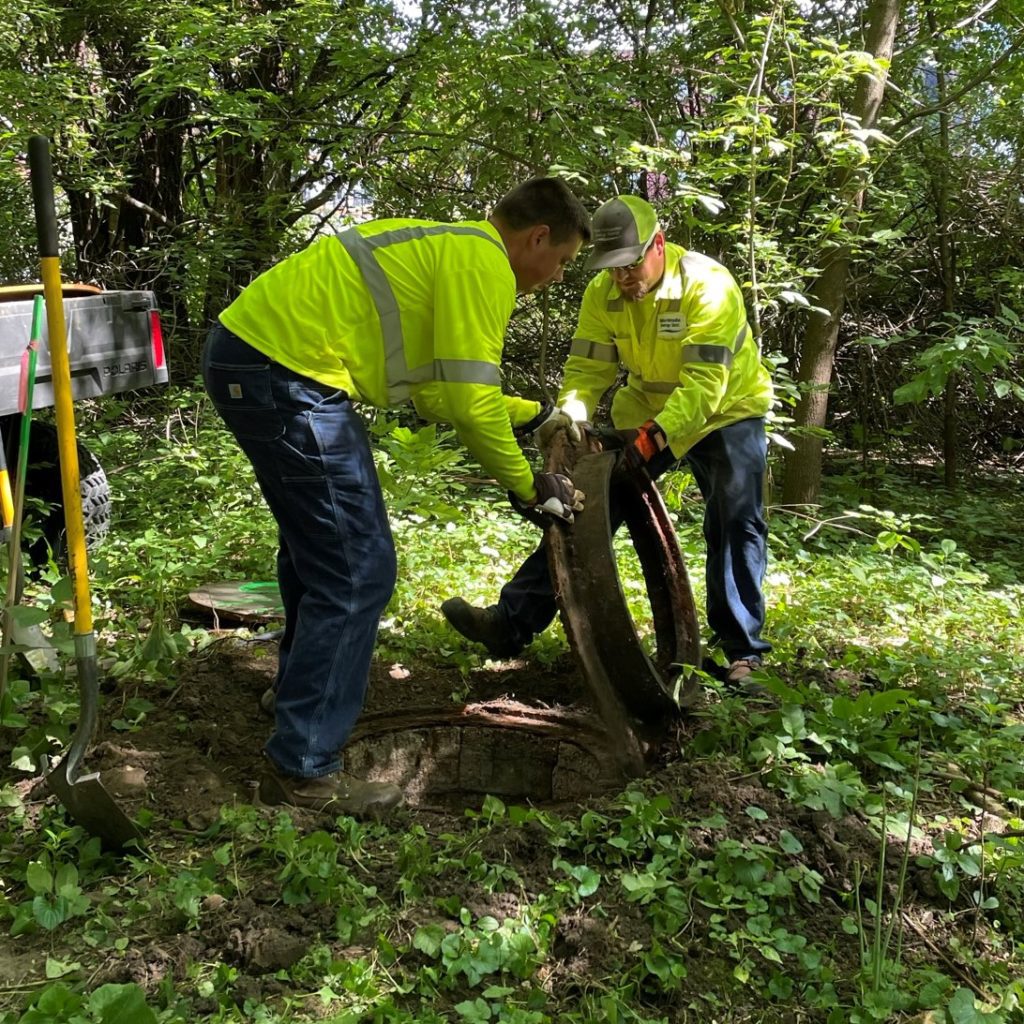
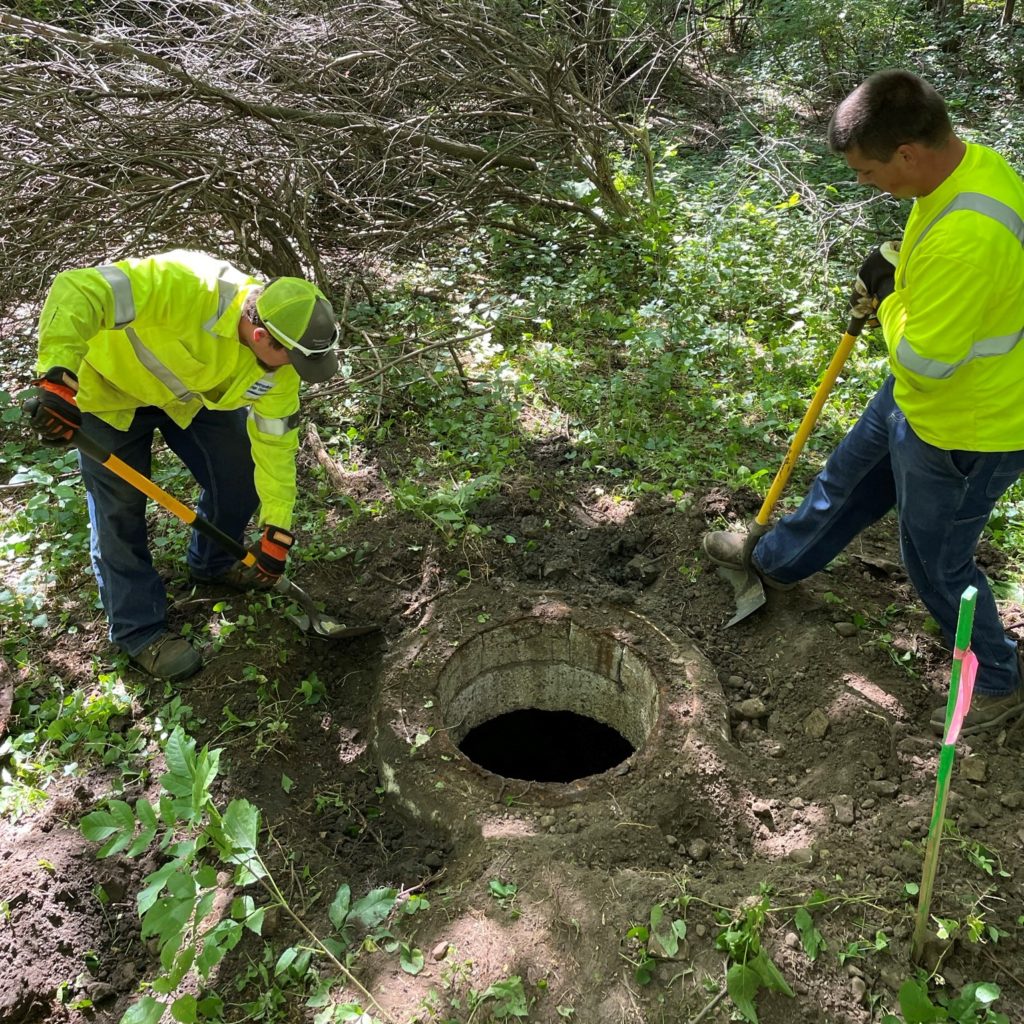
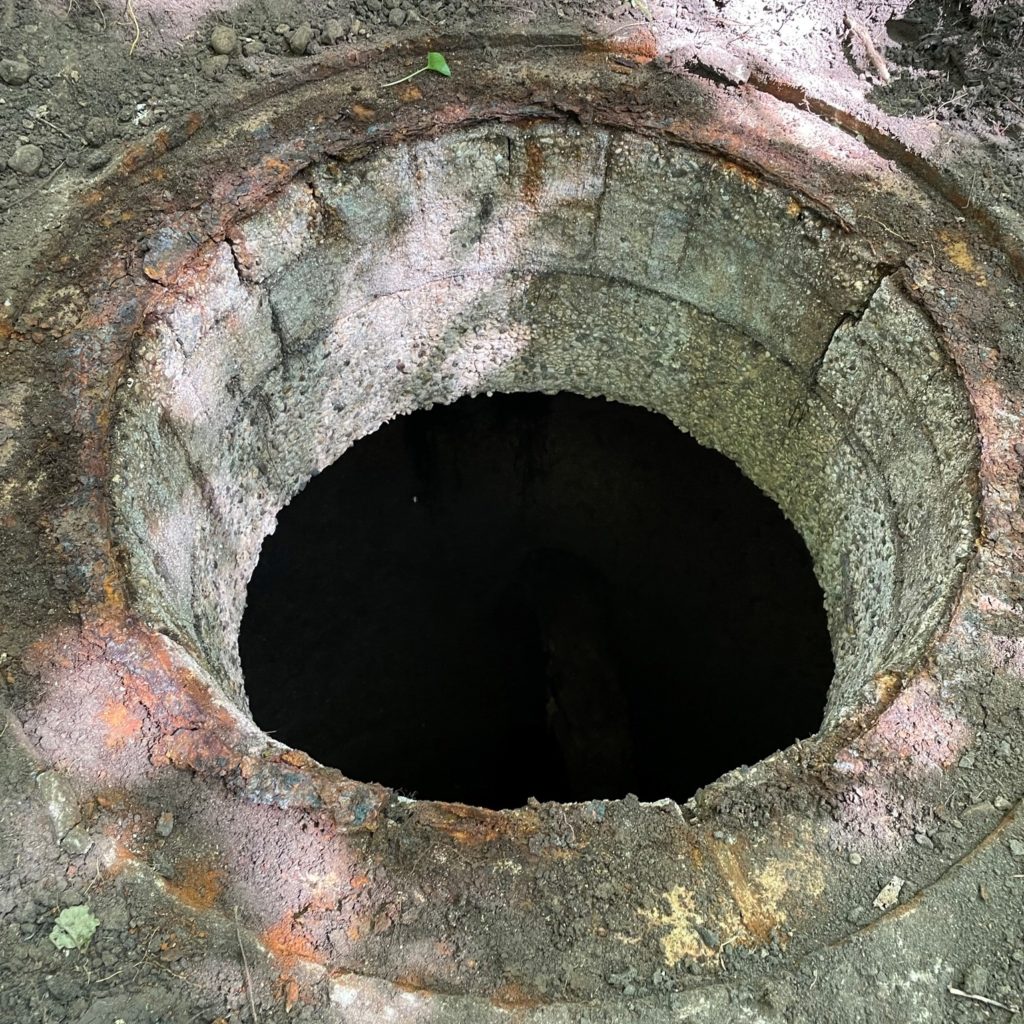
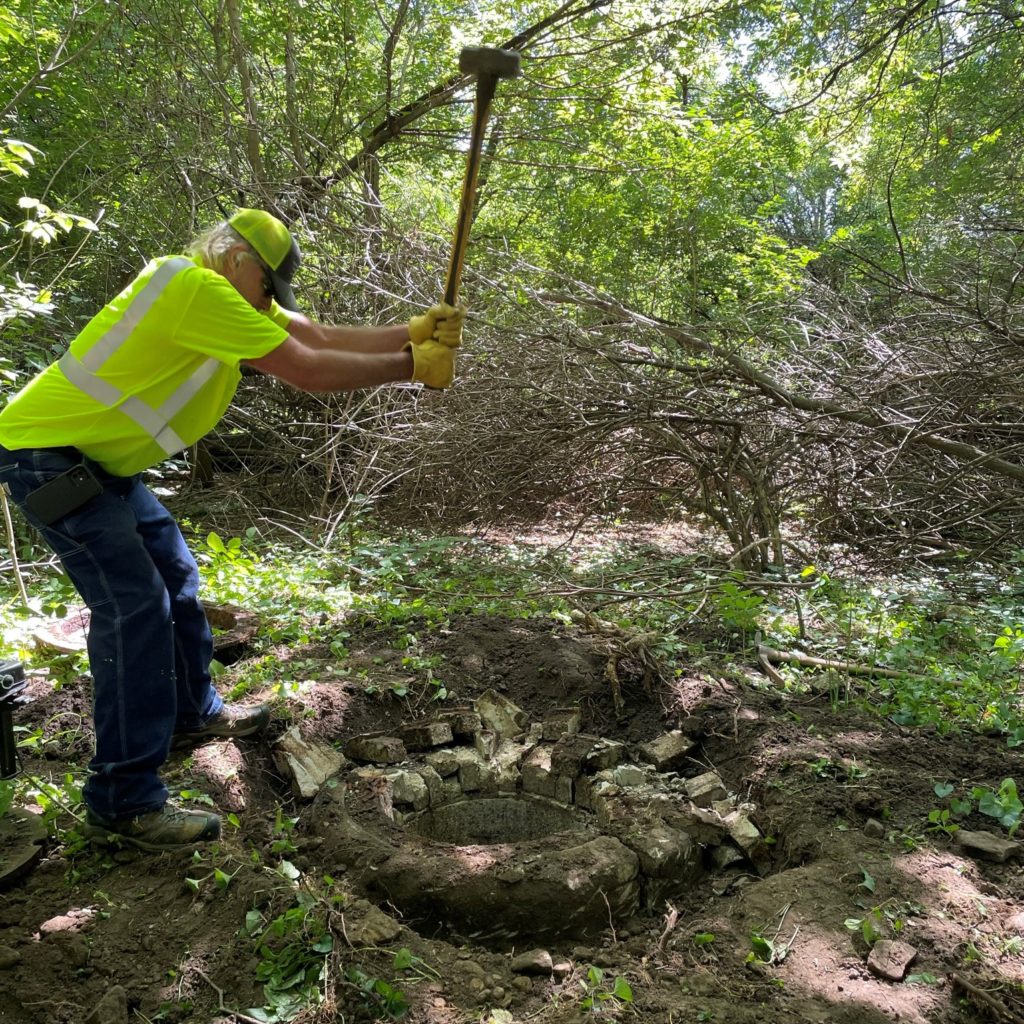
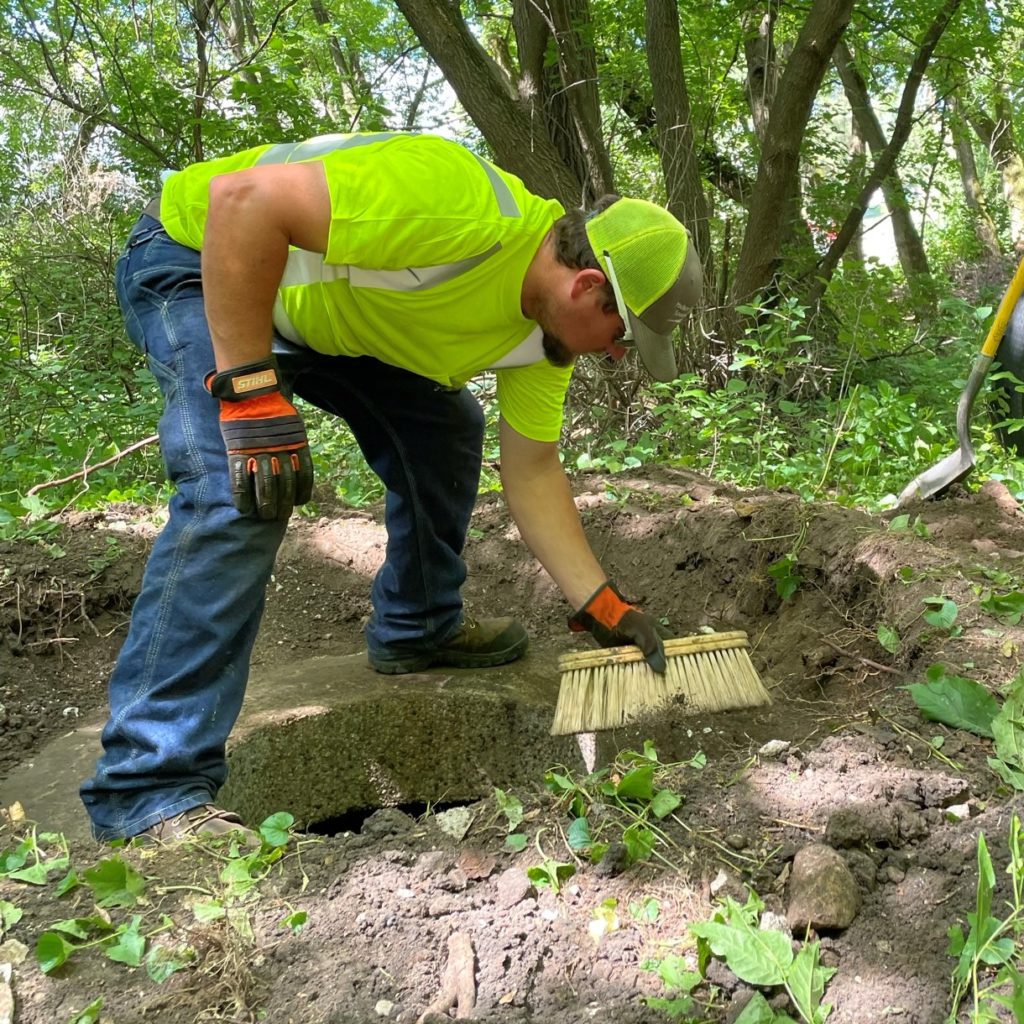
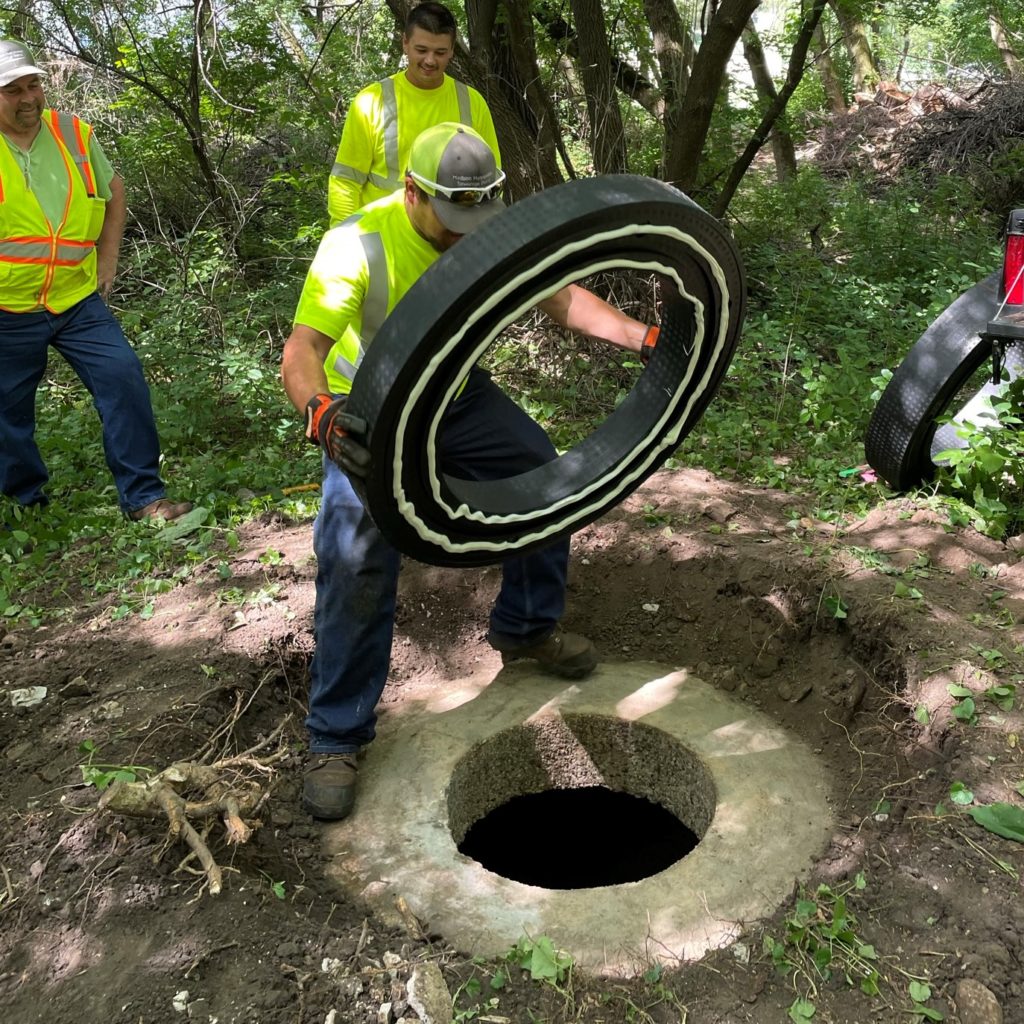
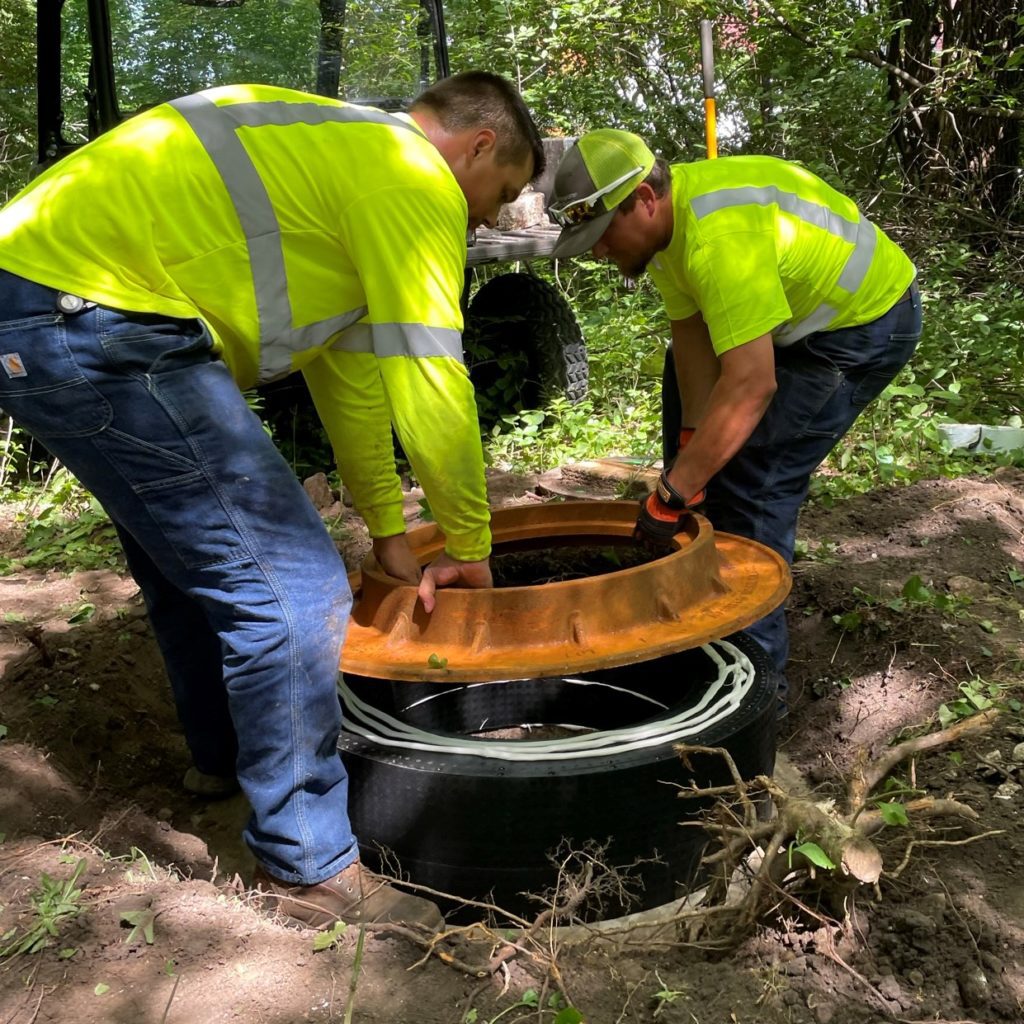
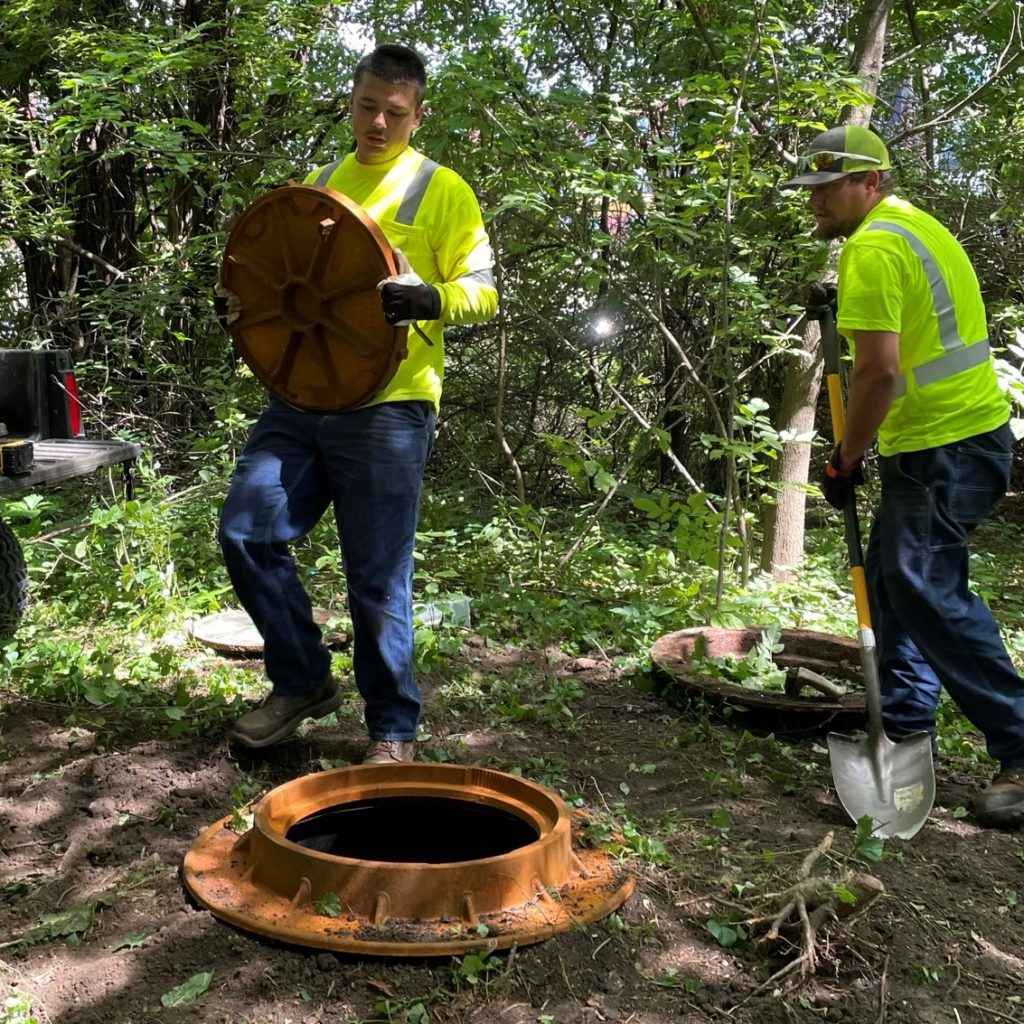
You can read more about the District’s I/I work in the article “Inflow and Infiltration Reduction Program makes steady progress on a complex issue.”
Written by Jessica Spiegel. Photos by Amy Steger.






